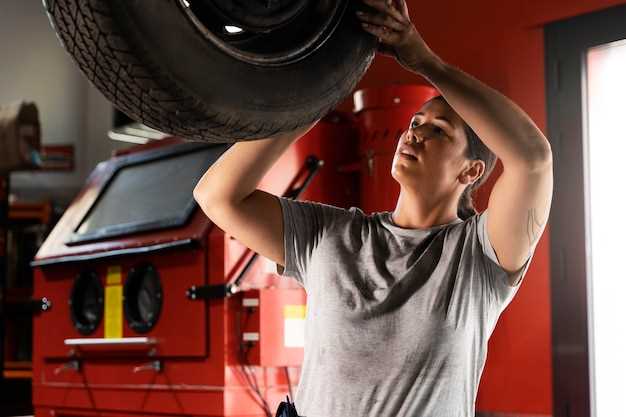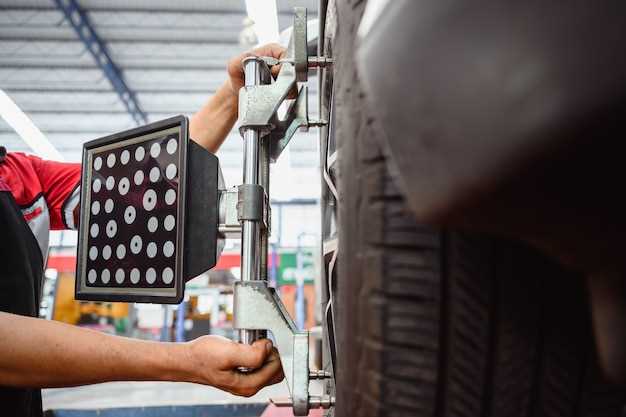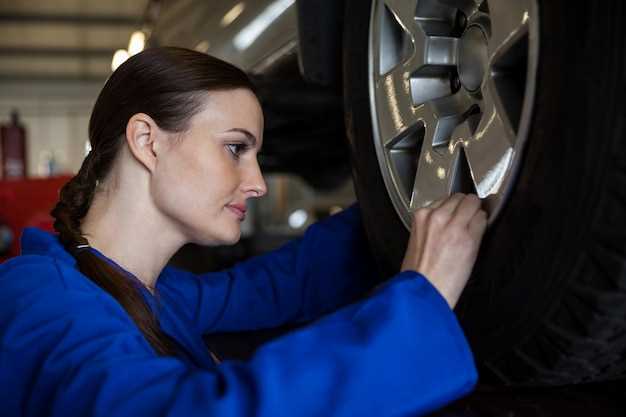
Creating an efficient tire changing and balancing station requires careful planning and the right tools. Whether you are a professional mechanic or a DIY enthusiast, having a well-organized space dedicated to tire services can significantly enhance productivity. This guide will walk you through the essential components and considerations needed to establish a functional station.
First and foremost, it’s important to understand the types of tools necessary for tire changing and balancing. These include tire changers, wheel balancers, air compressors, and various hand tools. Each piece of equipment plays a crucial role in facilitating the tire service process, and selecting the right models can make a significant difference in both efficiency and results.
In addition to the tools, the layout and design of your station are essential. Ensure that there is sufficient space for maneuvering vehicles and that your tools are easily accessible. An organized workspace not only improves workflow but also enhances safety, reducing the risk of accidents during tire changes. By strategically placing your equipment and supplies, you can create a smooth operation that caters to the demands of tire servicing.
Selecting the Right Location and Space Requirements

Choosing the right location for your tire changing and balancing station is crucial for operational efficiency and customer satisfaction. An ideal space should be easily accessible to clients, preferably close to major roads or highways. This visibility can attract more customers seeking quick tire services.
The space should accommodate all necessary tools and equipment, including tire changers, balancers, and storage for tires and other materials. A minimum area of 600 to 800 square feet is recommended for a well-organized setup. This size allows for safe movement and prevents congestion during busy hours.
Consider the workflow when configuring the layout. Ensure there’s enough space to easily maneuver vehicles in and out. Designate areas for tire storage and equipment to facilitate an efficient process without interruptions. A well-planned station layout enhances productivity and minimizes the risk of accidents.
Additionally, ensure that your location has sufficient power supply and proper drainage. Tire changing involves lubricants and other materials that require proper disposal. Having adequate lighting and ventilation is also essential to maintain a safe working environment, allowing technicians to work effectively and comfortably.
Finally, check local zoning laws and regulations regarding operating a tire service station. Compliance with these requirements will prevent potential operational issues in the future. Selecting the right location and space can significantly influence the success of your tire changing and balancing station.
Essential Tools and Equipment for Tire Changing and Balancing

To successfully set up a tire changing and balancing station, it’s crucial to have the right tools and equipment. The following is a list of essential items you will need for efficient tire service.
The first critical tool is a tire changer. This machine aids in the removal and installation of tires from rims. It features a bead-breaking arm to separate the tire bead from the wheel, along with various attachments to accommodate different tire sizes.
A tire mounting machine complements the tire changer, ensuring that tires are mounted systematically onto the wheel without damage. This helps maintain the integrity of both the tire and the rim.
Balancing equipment is also vital for achieving smooth driving and even tire wear. A wheel balancer detects imbalances in the tire and wheel assembly, allowing for precise placement of weights. There are manual and digital options available, with digital models often providing higher accuracy and ease of use.
In addition to the machinery, you will need hand tools such as tire irons, which assist in demounting tires, and valve core tools for easy installation and removal of valve cores. A torque wrench is essential for ensuring lug nuts are properly tightened to the manufacturer’s specifications.
A quality air compressor is necessary for inflating tires quickly and efficiently. Ensuring accurate pressure is critical for tire performance and safety. Alongside the compressor, a tire pressure gauge is essential for monitoring and adjusting tire pressure accurately.
Finally, consider investing in a tire pressure management system for advanced monitoring and maintenance of tire pressure over time. This technology helps in identifying issues early on, leading to improved safety and efficiency.
Overall, having these tools and equipment in place is fundamental for any tire changing and balancing station, ensuring efficient operation and high-quality service for customers.
Step-by-Step Procedure for Tire Installation and Balancing
Preparing for tire installation begins with gathering essential tools. You will need a tire jack, tire iron, air compressor, tire balancer, weights, and a valve tool. Ensuring you have the right tools will facilitate the process and could result in a quicker turnaround time.
Start by safely lifting the vehicle with the tire jack. Make sure the vehicle is on a stable surface, and engage the parking brake. Remove the wheel cover or hubcap if applicable. Use the tire iron to loosen the lug nuts while the wheel is still on the ground, which prevents spinning.
Next, fully lift the vehicle and remove the loosened lug nuts. Carefully take off the wheel and set it aside. Clean the hub and brake surface to prevent debris from affecting the new tire’s performance. Now, it’s time to mount the new tire onto the wheel. Ensure the tire fits snugly against the rim and examine it for any visible defects.
Secure the new tire by placing the wheel back onto the wheel hub. Hand-tighten the lug nuts to keep the wheel in place. Once all lug nuts are in position, use the tire iron to tighten them in a crisscross pattern. This ensures even distribution of pressure across the wheel.
Deflating the tire slightly before balancing can improve the accuracy of the balance. After installation, proceed to balance the tire using a tire balancer. Follow the specific instructions for your balancer, as the procedure may vary. Typically, you will place the wheel assembly on the balancer and spin it to check for any heavy spots.
If the tire is unbalanced, it will indicate where to add weights. Attach the necessary weights according to the balancer’s readings. Recheck the balance after adding weights to confirm that the tire is now properly balanced. Once balancing is complete, reattach the wheel to the vehicle.
Lower the vehicle back to the ground and perform a final check on the lug nuts to ensure they are tightly secured. Finally, reinflate the tire to the recommended pressure using an air compressor. Repeat the process for any remaining tires, ensuring each one is properly installed and balanced before road use.




